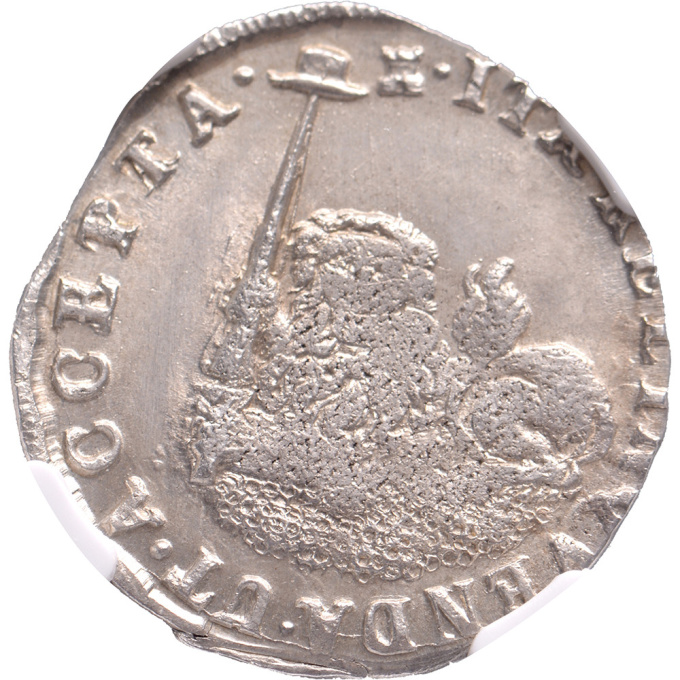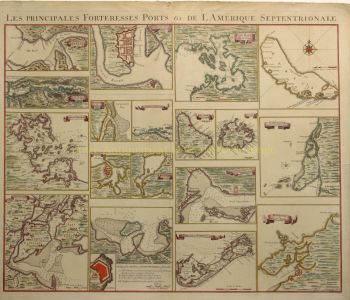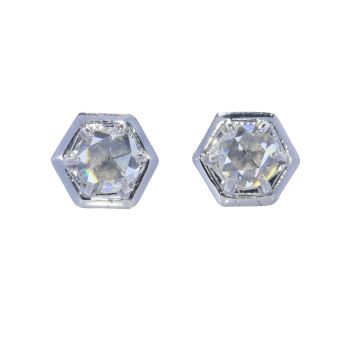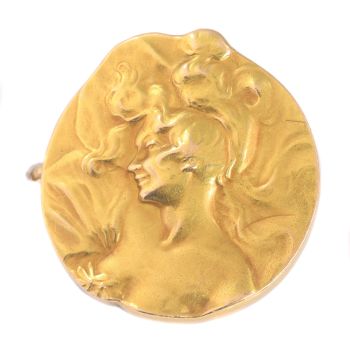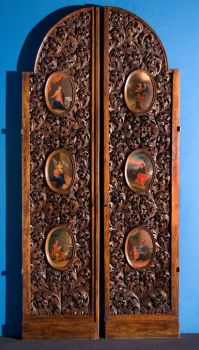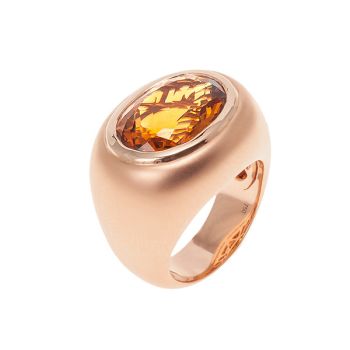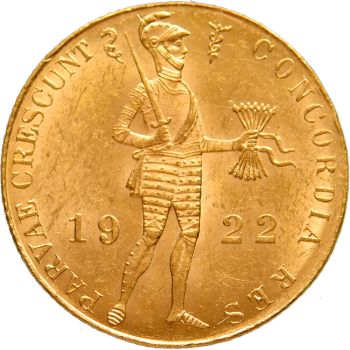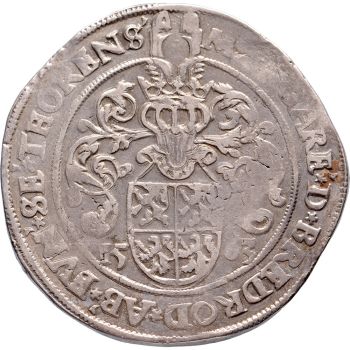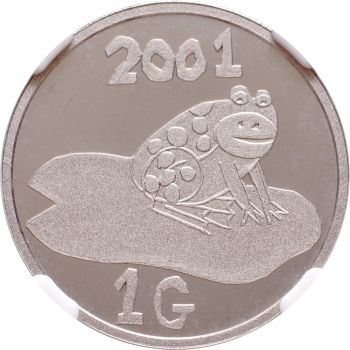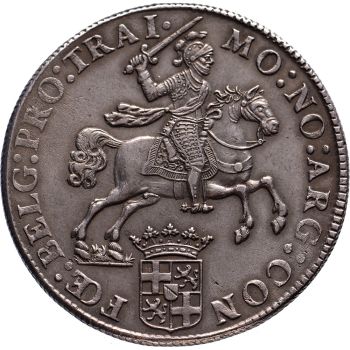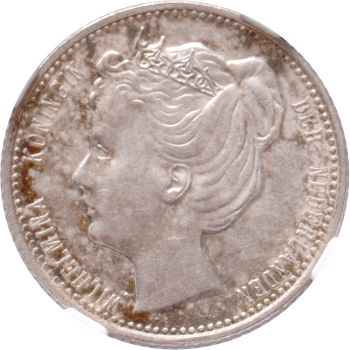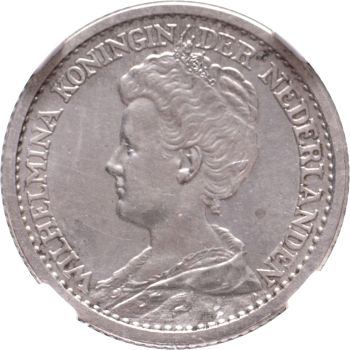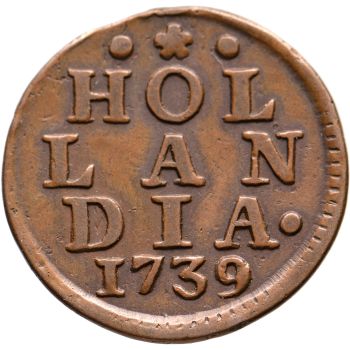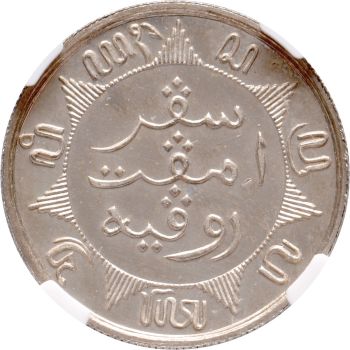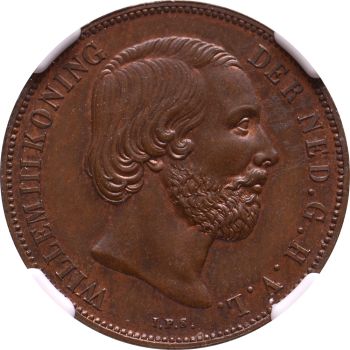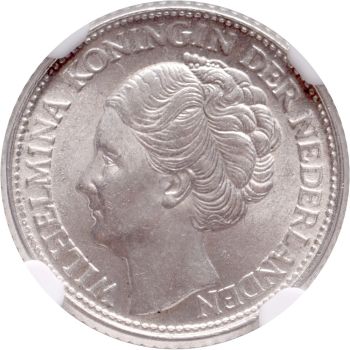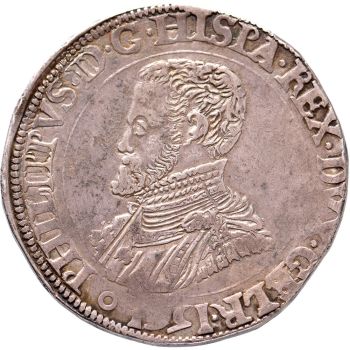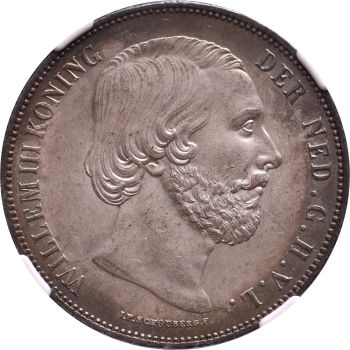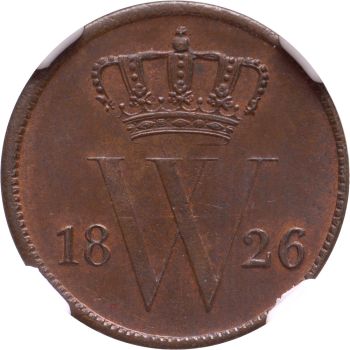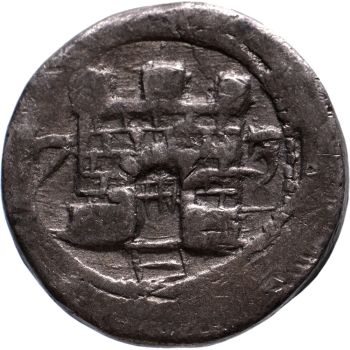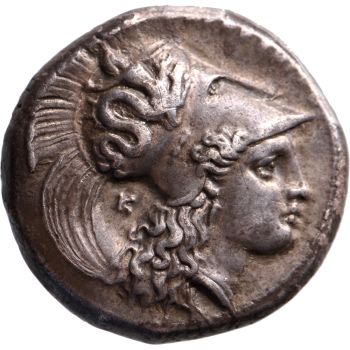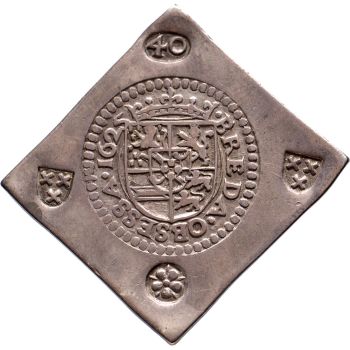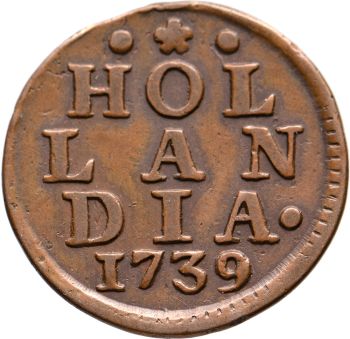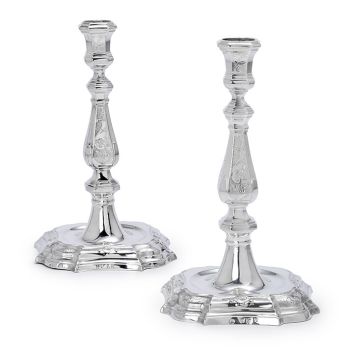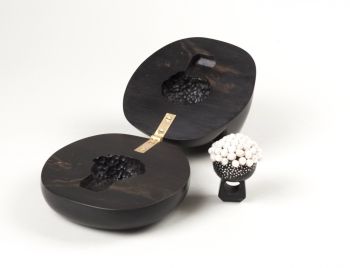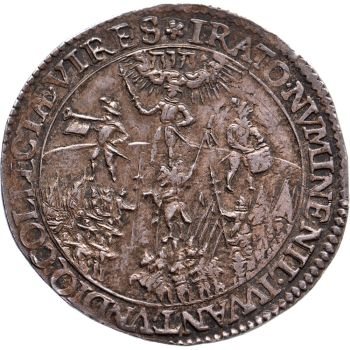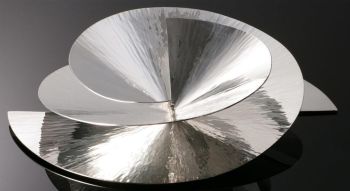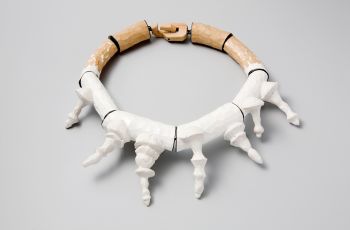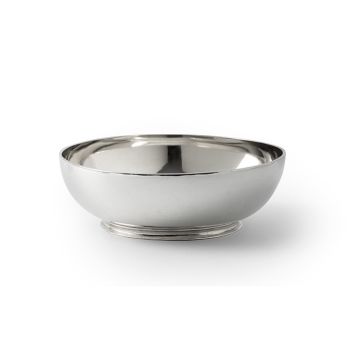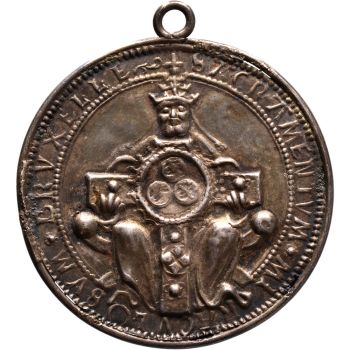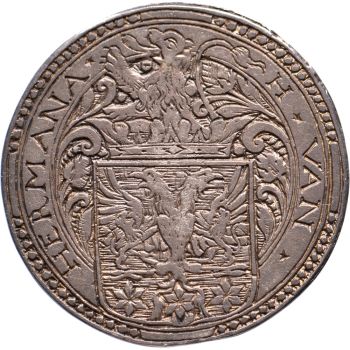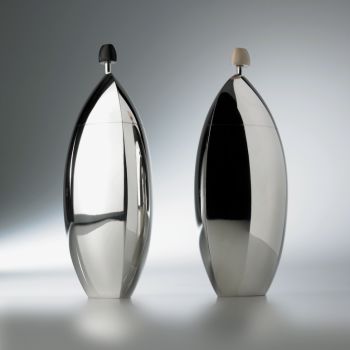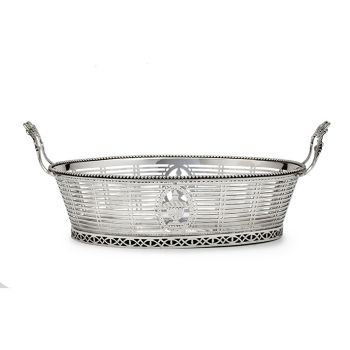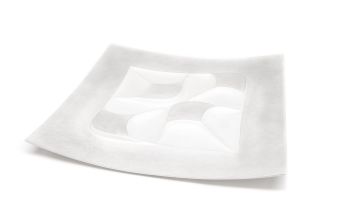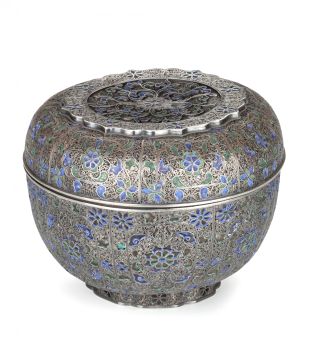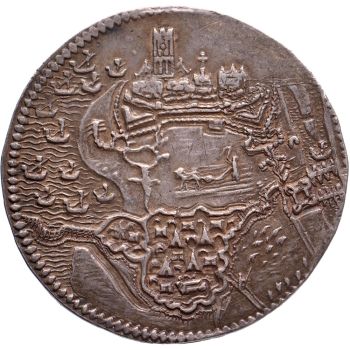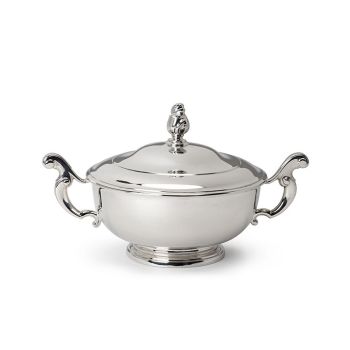Hoedjesschelling Zeeland – De Zuytdorp NGC MS 64 1711
Artista Sconosciuto
Argento
Attualmente non disponibile tramite Gallerease
- A proposito di opere d'arteObverse: ITA RELINQVENDA UT ACCEPTA, lion lying down with liberty hat on spear
Reverse: MO. NO. ARG. ORDIN. ZEELAND, crowned provincial arms between split date
Recovered from the wreck of the VOC ship ‘De Zuytdorp’
With full original colour
ONLY AND HIGHEST GRADE AT NGC
EXTREMELY RARE
With NGC Shipwreck certification
Zuytdorp (also Zuiddorp) was an 18th-century trading ship of the Dutch East India Company. On August 1 1711 the Zuytdorp was dispatched from the Netherlands to the trading port of Batavia. Many trading ships travelled a “fast route” using the strong Roaring Forties winds to carry them across the Indian Ocean to within sight of the west coast of Australia, from where they would turn north towards Batavia. The Zuytdorp never arrived at its destination and was never heard from again. No search was undertaken, presumably because the VOC did not know whether or where the ship wrecked or if it had been taken by pirates.
In the mid-20th century, Zuytdorp’s wreck site was identified on a remote part of the Western Australian coast between Kalbarri and Shark Bay, approximately 25 miles north of the Murchison River. This rugged section of coastline was subsequently named the Zuytdorp Cliffs.
Diameter: 24.4 mm
Grade: UNC
Reference: V. 93.3; CNM 2.49.85 - A proposito di opere artista
Può succedere che un artista o un creatore sia sconosciuto.
Alcune opere non sono determinate da chi sono state realizzate o sono state realizzate da (un gruppo di) artigiani. Esempi sono statue dell'antichità, mobili, specchi o firme non chiare o leggibili ma anche alcune opere non sono affatto firmate.
Inoltre puoi trovare la seguente descrizione:
•"Attribuito a …." A loro avviso probabilmente opera dell'artista, almeno in parte
•“Studio di ….” o “Officina di” A loro avviso un'opera eseguita nello studio o nella bottega dell'artista, eventualmente sotto la sua supervisione
•“Cerchio di…” A loro avviso un'opera del periodo dell'artista che mostra la sua influenza, strettamente legata all'artista ma non necessariamente al suo allievo
•"Stile di..." o "Seguace di..." A loro avviso un'opera eseguita nello stile dell'artista ma non necessariamente da un allievo; può essere contemporaneo o quasi contemporaneo
•“Modalità di…” A loro avviso un'opera nello stile dell'artista ma di epoca successiva
•"Dopo …." A loro avviso una copia (di qualsiasi data) di un'opera dell'artista
•“Firmato…”, “Datato…” o “Iscritto” A loro avviso l'opera è stata firmata/datata/inscritta dall'artista. L'aggiunta di un punto interrogativo indica un elemento di dubbio
•"Con firma....", "Con data...", "Con iscrizione..." o “Riporta firma/data/iscrizione” a loro avviso la firma/data/iscrizione è stata aggiunta da qualcuno diverso dall'artista
Artwork details
Related artworks
- 1 - 4 / 12
- 1 - 4 / 24
Frederik Rudolf Precht
Trancio di pesce d'argento olandese1756
Prezzo su richiestaJacob J. Roosjen SRI
Arnoldus Koolhaas
Coppia di candelieri in argento olandesi1754
Prezzo su richiestaJacob J. Roosjen SRI
1 - 4 / 24

